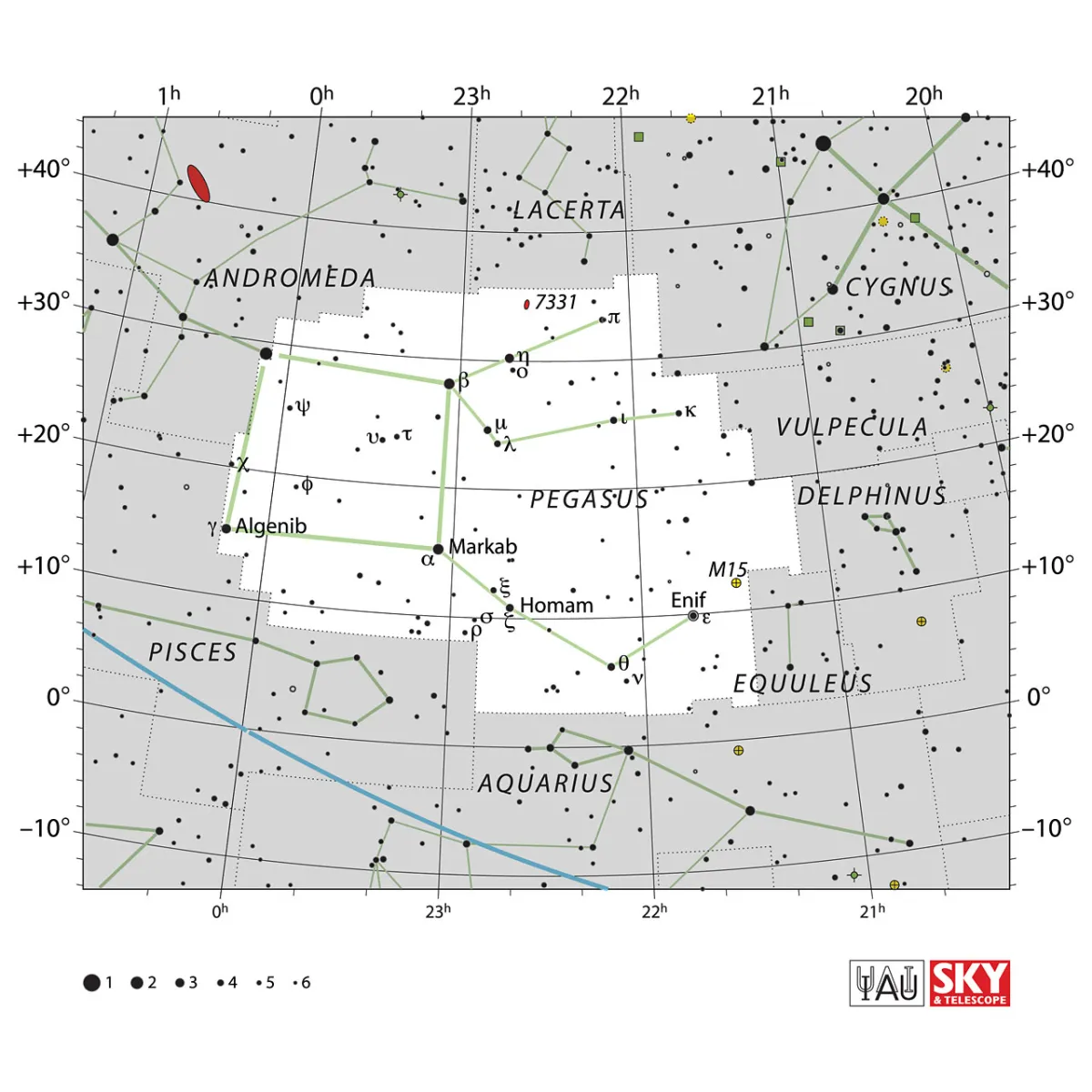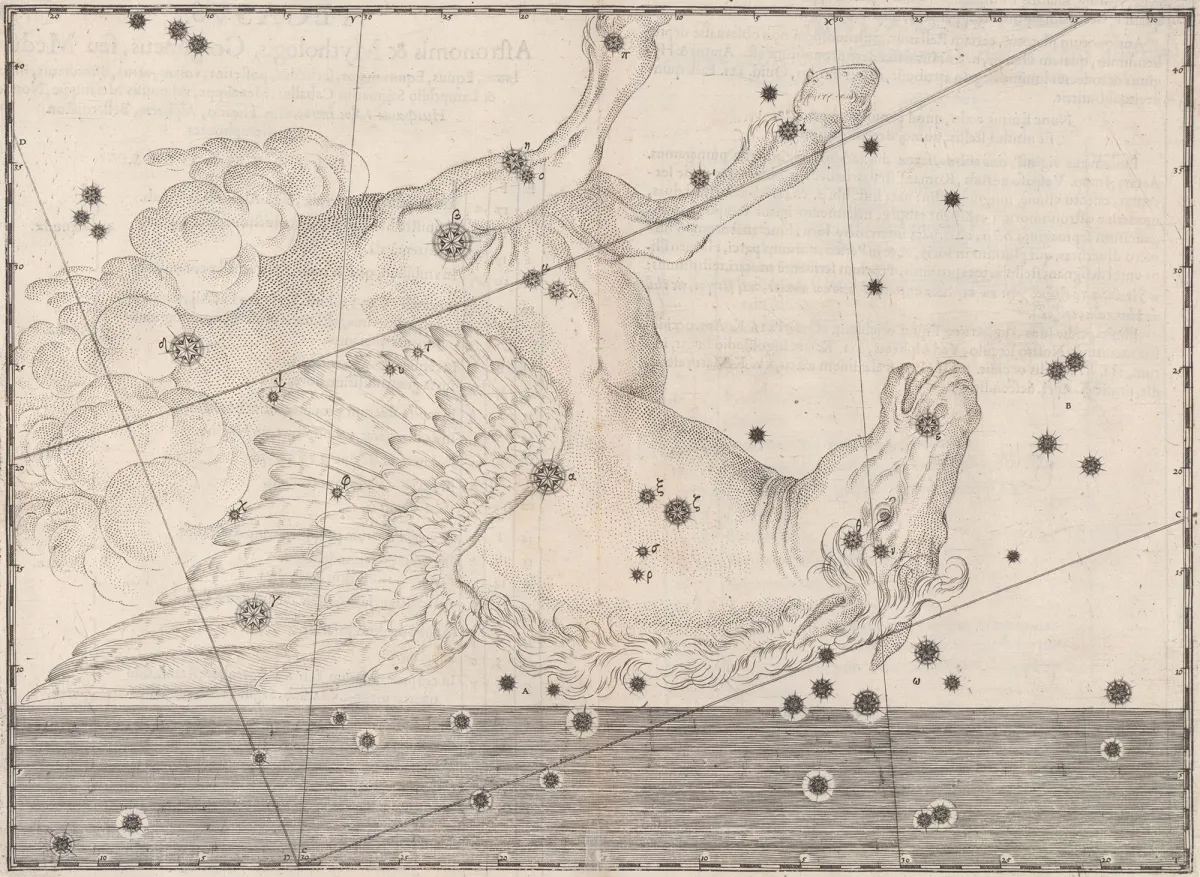Constellation Pegasus (Winged Horse)

Properties
Pegasus is a large but less noticeable constellation with an area of 1121 square degrees. The most striking is the large Pegasus rectangle with a small, equilateral triangle at its northwest corner. In this triangle one usually wrongly suspects the head of the winged horse, but it is the attachment of its two forelegs. The rear of the horse has been lost. Or is it Baron Münchausen's half horse? The constellation shares a star with the constellation Andromeda, the northeast corner star of the Pegasus square, Sirrah or Alpheratz called. But he is counted to the constellation Andromeda. The centre of the constellation Pegasus culminates around midnight on September 1st. [9, 15]
| α Peg | Markab, Marchab |
| β Peg | Scheat, Sheat, Seat Alpheras, Menkib |
| γ Peg | Algenib |
| ε Peg | Enif, Enf, Enir, Al Anf, Os Pegasi, Fom |
| ζ Peg | Homam, Homan, Humam, Al Hammam |
| η Peg | Matar |
| θ Peg | Baham, Biham |
| τ Peg | Salm, Kerb, Markab, El Khereb |
| IAU Name | Pegasus |
| IAU Genitive | Pegasi |
| IAU Abbr. | Peg |
| English Name | Winged Horse |
| Culmination at local midnight | 5 September |
| Season (Latitude +0.0°) | May … February |
| Right Ascension (J2000.0) | 21h 08m 43s … 00h 14m 58s |
| Declination (J2000.0) | +02° 19' 32" … +36° 36' 25" |
| Area | 1121 deg2 |
| Neighbours (N↻) | Lac, Cyg, Vul, Del, Equ, Aqr, Psc, And |
Deep-Sky Object Descriptions
Catalogues

Mythology and History
Pegasus, or Pegasus, is the famous winged horse, the child of Medusa, sired by Poseidon, god of the oceans. The Medusa was one of the gorgons who wore snakes instead of hair and whose gruesome sight made one petrify. Perseus had beheaded Medusa and from the severed neck Pegasus jumped out with blood-splattered mane.
Pegasus lived at the residence of the gods, he wore lightning and thunders for Zeus and only the hero Bellerophontes could once tame it with a golden bridle that Athena, the goddess of science and art, gave him. Bellerophontes has endured unbelievable deeds and adventures with his Pegasus, he even defeated and killed the Chimaira, that monster of Greek legend that carried a fire-breathing lion's head on a goat and dragon's body. But when Bellerophontes even wanted to storm the sky in his arrogance on the Pegasus, he evidently misused the golden bridle of Athena, because the horse shook him off and returned to the abode of the gods.
Pegasus, the winged horse, Equus Ales (ales = winged), Cornipes (horn-footed, hoofed ), Sonipes (with resounding feet, horse), Sonipes Ales, Equus Pegasus, Pegasus Equus alatus and Bellerophon were some of the names that this constellation had. [20]